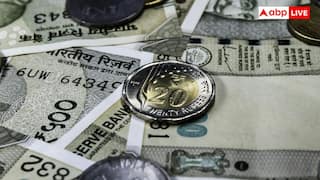India Prepares To Roll Out 5G Soon. What Is 5G Spectrum And How It Works | Explained
The central government on Wednesday approved the proposal to auction high speed fifth generation (5G) telecom spectrum for 20 years by the end of July

India is on the verge of entering the 5G network.
In the expanding world of metaverse, the central government on Wednesday approved the proposal to auction high speed fifth generation (5G) telecom spectrum for 20 years by the end of July. This marks the grand beginning of the country’s next generational network connection as the Union Cabinet has given go-ahead for the auction of 72 GHz of spectrum.
The auction will be held for spectrum in various Low (600 MHz, 700 MHz, 800 MHz, 900 MHz, 1800 MHz, 2100 MHz, 2300 MHz), Mid (3300 MHz), and High (26 GHz) frequency bands. The auction will start by the end of July.
The telecom industry is expected to shell out around Rs 1-1.1 lakh crore on the 5G auction, according to a rating agency.
What is the 5G spectrum?
5G or fifth-generation wireless is the latest iteration of mobile technology, engineered to greatly enhance the speed and responsiveness of wireless networks. According to news reports, 5G will bring wider bandwidths by expanding the usage of spectrum resources. Starting from sub-3 GHz used in 4G to 100 GHz and beyond, 5G can operate in both lower bands (e.g., sub-6 GHz) as well as mmWave (eg. 24 GHz and up), which will bring extreme capacity, multi-Gbps throughput, and low latency.
First launch of 5G
In 2019, South Korea became the first country to adopt a 5G network. Barring South Korea, China, the US, UK, the Philippines, Canada, Spain, Italy, Germany, and Saudi Arabia are using 5G technology.
5G roll-out in India
In India, 13 cities across the country will get 5G in the beginning. These 13 cities are Ahmedabad, Bengaluru, Chandigarh, Chennai, Delhi, Gandhinagar, Gurugram, Hyderabad, Jamnagar, Kolkata, Lucknow, Mumbai, and Pune, according to the Department of Telecommunications (DoT).
5G test bed
The DoT has tied up with eight agencies for the Indigenous 5G (/topic/5g) Test bed project. These agencies are Indian Institute of Technology (IIT) Bombay, IIT Delhi, IIT Hyderabad, IIT Madras, IIT Kanpur, Indian Institute of Science (IISC) Bangalore, Society for Applied Microwave Electronics Engineering & Research (SAMEER), and Centre of Excellence in Wireless Technology (CEWiT). The project started in 2018.
5G benefits
According to analysts, 5G will be about 10 times faster in speed than the existing 4G network. This network will allow a greater number of devices to be connected to a faster mobile network in a smaller area without any loss of speed.
Due to higher bandwidth, streaming of videos through 5G will be faster as many people watch online videos.
5G will also help in enabling swift online payments facilities, while industry experts opine that 5G is more reliable against threats of malware or jamming of devices. So, it may enhance network security.
Domestic touch
The Centre is aiming to develop 5G technology domestically. It has incentivised activity in the sector through production-linked incentives (PLIs) for manufacturing of mobile handsets, telecom equipment, and chips, which is expected to aid 5G launch.
Prime Minister Narendra Modi, in a bid to reduce foreign facilities, in May inaugurated India’s 5G test bed for industry to test the products locally at a cost of Rs 200 crore.
Major telecom operators such as Bharti Airtel, Vodafone Idea, and Reliance Jio have already conducted 5G trials in India, while several smartphone companies have been selling 5G-supported smartphones for over a year now.
The advent of 6G
Modi had also said that a taskforce has started working to launch 6G services in India by the end of this decade.
The government on Wednesday also decided to enable the development and setting up of Private Captive Networks to push a new wave of innovations in ‘Industry 4.0’ applications such as machine to machine communications, Internet of Things (IoT), Artificial Intelligence (AI) across automobile industry, health care, agriculture, energy, and other sectors.
Currently, most Indian mobile users are using 4G network connection. According to the information coming from the government, the 5G network will be 10 times faster than the existing 4G network.
Bharti Airtel was the first telco to launch 4G network way back in 2012. Later, other telecom operators have rolled out 4G network. 4G replaced 3G network. 4G was much faster than 3G, which offered a speed of 14mbps. The speed in 4G can reach 100mbps.
Related Video
Delhi flood update: once again AAP points out BJP, for Delhi's present situation




























